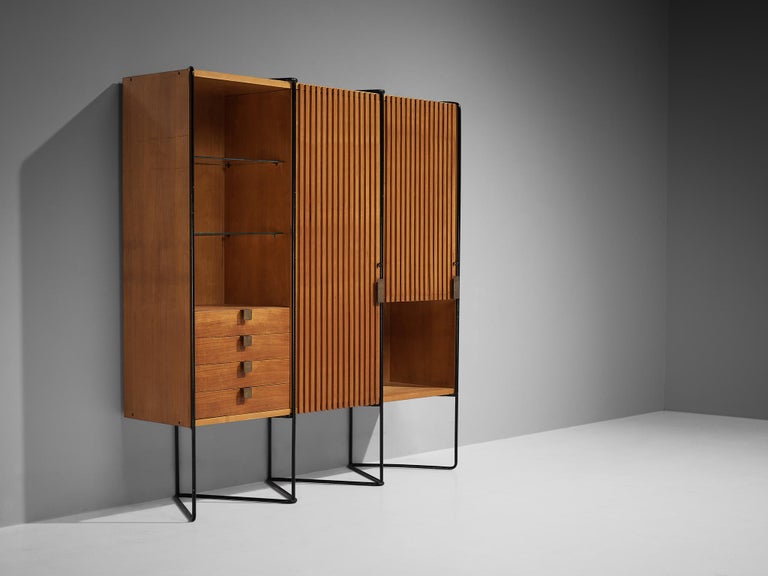
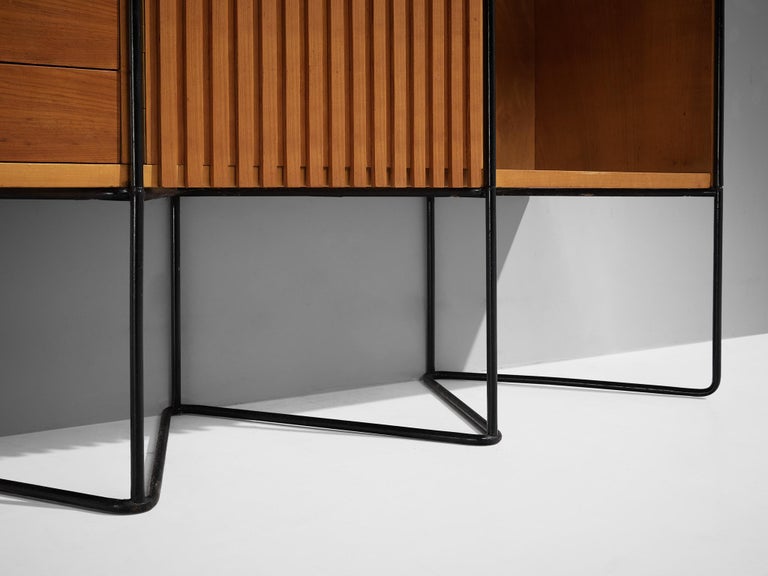
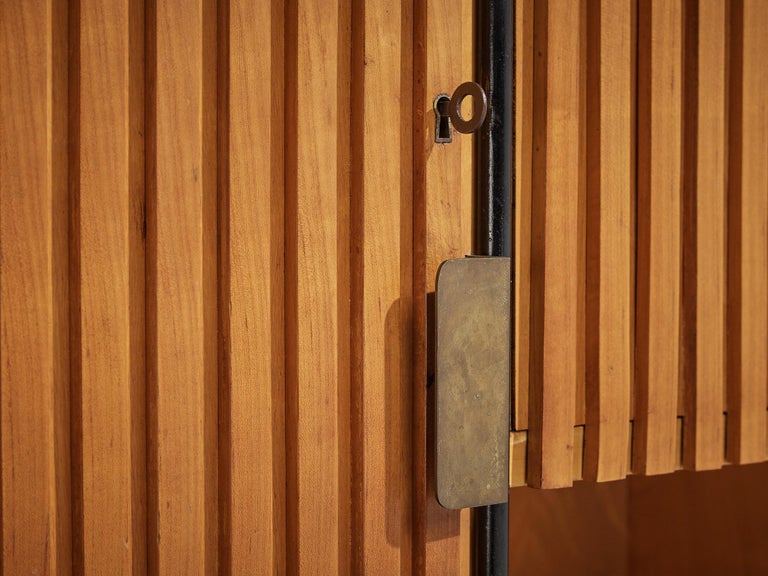
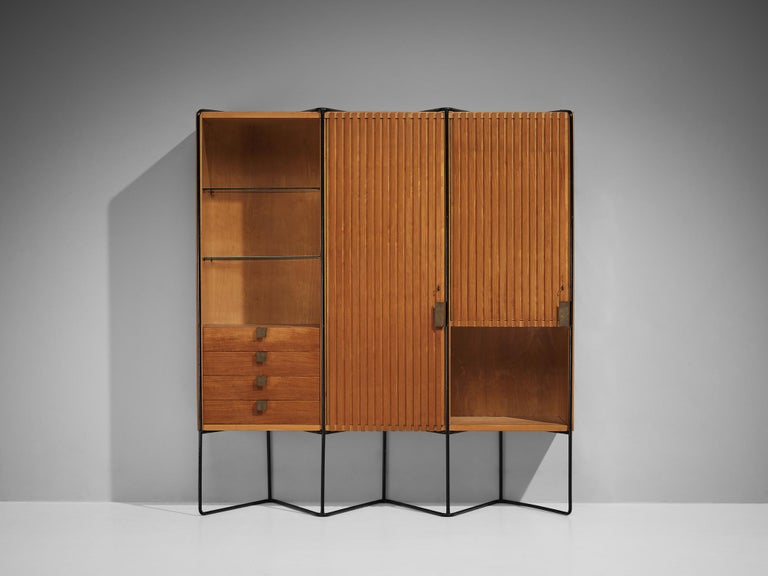
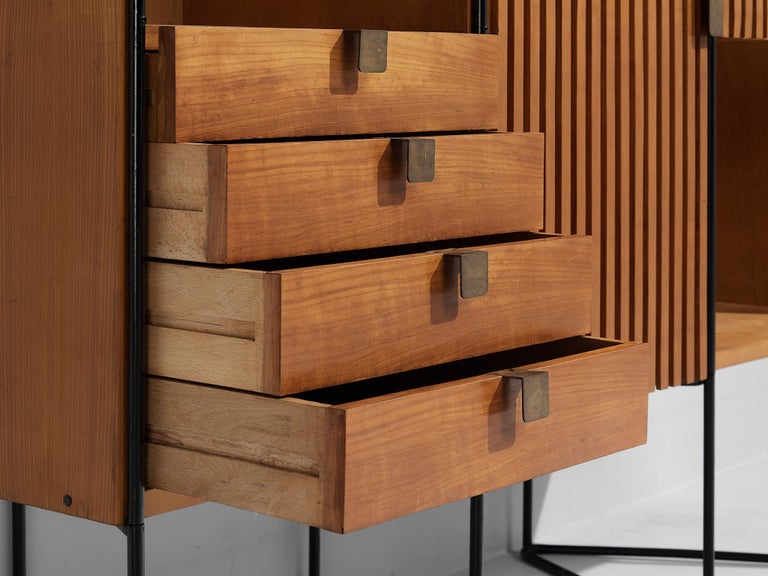
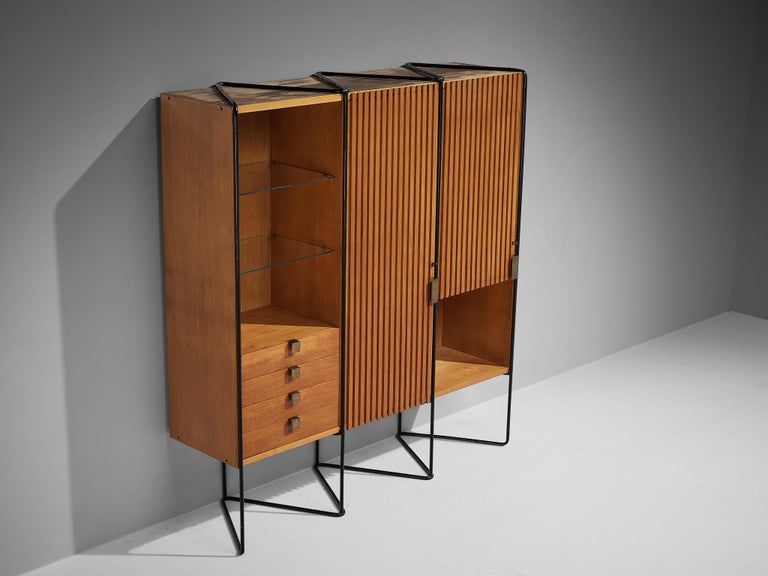
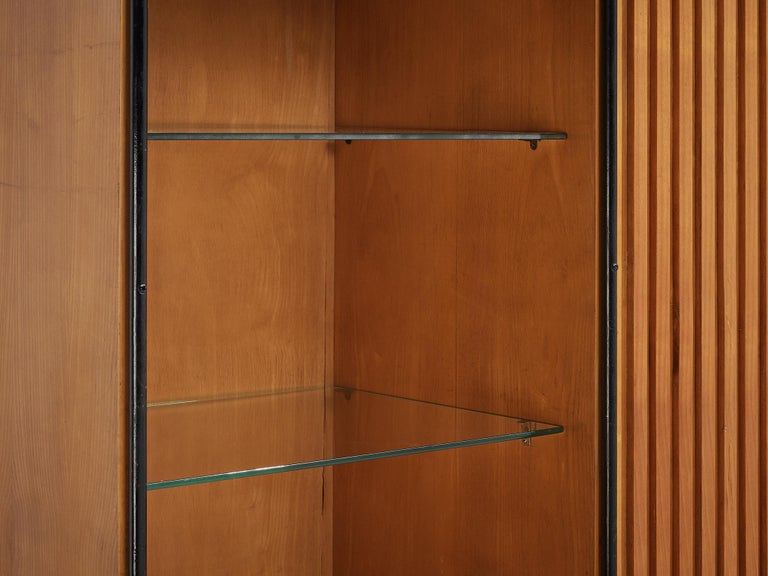
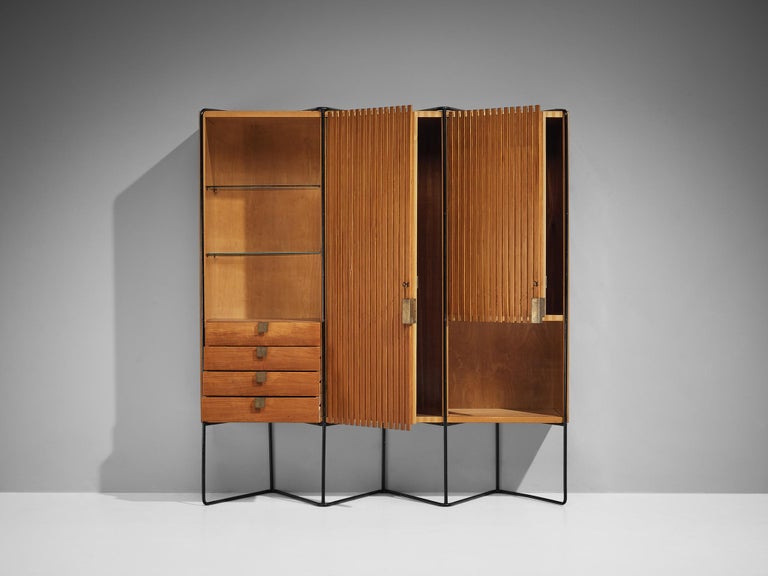
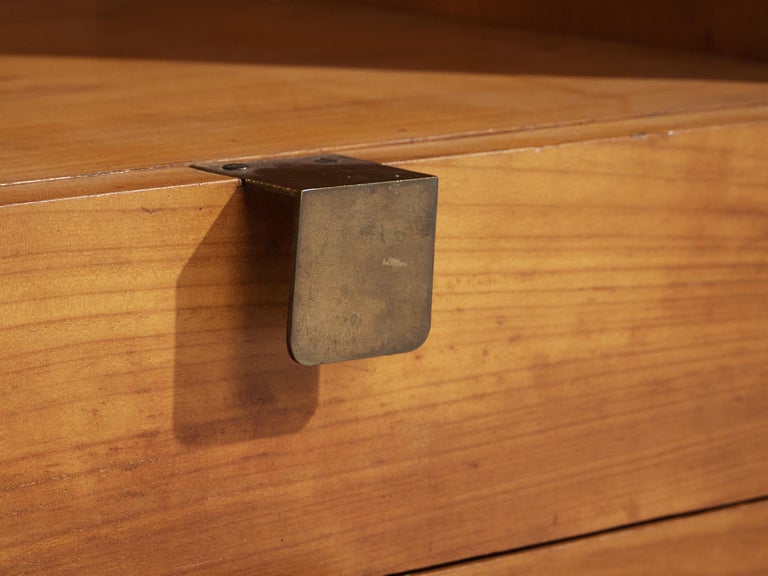
Taichiro Nakay for La Permanente Mobili Wall Cabinet in Cherry
Taichiro Nakay (Nakai), sideboard, coated steel, cherry, brass, glass, circa 1955
Taichiro Nakay is an incredibly talented Japanese designer who is mostly known for his participation at the Selettiva del Mobili competition in Cantù. During the twentieth century, Cantu was considered the Italian city of furniture. However, after the war, Cantu was unable to catch up with the rapid changes and advances and there were more foreign countries such as Scandinavia who, with their styles, grew in popularity and formed a massive competition for Cantu. Therefore, Cantu needed to renewal their designs that were often outdated, in order to stay up to date with trends and gain new popularity. In the spring of 1954, the board of Cantu decided to launch an international prize competition for furniture designers that would in order to revive the economy of the local design and draw attention to Cantu. The “Selettiva del Mobile” was born and would be organized every two years up until 1975. Set up as a real international competition, it brought together designers from all over the world such as Franco Albini, Gio Ponti, Ico Parisi, Paolo Buffa, Ettore Sotssas, BBPR, and many others. The selection for received projects was done by the Concorso Internazionale del Mobili, a highly qualified jury.
Taichiro Nakay participated during the edition from 17th September to 5th of October 1955. Overall, the 1955 edition was incredibly interesting thanks to the exceptional jury consisting of Gio Ponti, Alvar Aalto, Carlo De Carli and Finn Juhl. It was furthermore possible to win prices. As did Taichiro Nakay. With his presentation of a living room design, Nakay won a special prize together with Finish designer Ilmari Tapiovaraa and the Milanese architect Eugenia Alberti Reggio. It is easily understandable why Nakay had attracted the attention of the jury. With his salon, he had analyzed the market clearly and he was able to create designs with Japanese principles as well Italian constraints. His lines are simple and clean yet energetic and organic, all characteristic for Japanese creations. The structure of the storage unit feels similar to a Franco Albini bookcase, but is carried out with Japanese geometric simplicity.
This bookcase is supported by a black coated steel frame based on a zig-zag structure, similar to the cabinet he presented at the Selettiva in 1955. The warm tone of the cherry builds a striking contrast with the black metal frame which runs all the way up the cabinet. A vertical structure is used as decorative finish for these doors, creating an interesting aesthetic in combination with the large brass handles.
Please note that this item is in good, used condition.
VAT within the EU: When buying or delivering an item within the EU, VAT usually applies and will be added.
Choose options









Product Details